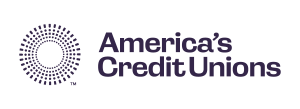Employee retention remains a significant challenge for credit unions and most businesses. Even as inflationary pressures and recession fears have mounted this summer, the Bureau of Labor Statistics reported that unemployment remained at a low 3.6 percent, and there are only 0.5 people available for every one open position. These statistics demonstrate that the marketplace has opportunities available for those looking to change jobs.
This is one of the many reasons retention of your team should remain an important objective. Offering personalized training opportunities is one strategy managers can use to maintain or improve staff retention rates.
“Training is one of the most critical ways to connect with employees and involve them in building your culture of learning and service,” said Alicia Steindorf, director of online learning strategy at Credit Union National Association. In her July 21 webinar, “Increase Employee Engagement and Retention by Upskilling Staff,” Steindorf presented ways to help team members learn and grow to the more than 170 attendees.
Steindorf said retention rates rise 30 to 50% for companies with strong learning cultures. She cited a study from Gallup that found 86% of millennials would be prevented from leaving their current position if training and development were offered by their employer.
Upskilling improves existing employees' skills and abilities so they can advance in their current roles and careers within the organization. It also helps to minimize any skills gaps in the workplace.
Benefits of developing an upskilling culture include:
- Building and developing skills to fill gaps left by turnover
- Targeting skill gaps to ensure employees have what they need to succeed and are in the correct place within the organization
- Utilizing skills to inform training plans/programs
Steindorf suggested that credit union HR professionals and trainers should refer to existing internal job descriptions to identify which skill gaps might exist for people in specific positions. This is best done by collaborating with managers to determine what skills development opportunities exist for current staff.
Steindorf also shared that individualized learning options serve both the employee and credit union management better than one-size-fits-all systems, where a set training track of content has been established and the expectation is that all employees in similar functions take the same track over time. Employees who realize that their employer is considering their specific training needs are much more likely to fall within the positive side of the retention rate statistical spectrum.
For access to a free recording of the webinar, visit CUNA’s website here.
To support individualized training for each member of your team, a web-based training service such as CUNA Professional Development Online (CPD Online) offers the functionality and content to give your employees the opportunity for meaningful professional development.







